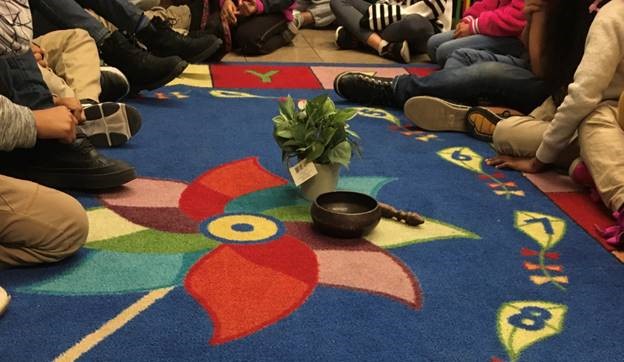The Value is in the Follow-up
Third graders at an elementary school sat in circle to discuss the incident last week: four students making fun of their classmate’s appearance. They laughed as the student was being hurt and humiliated while the third graders were at a specials class, despite having spent time in circle as a class building a culture of respect and rapport (Danielson Domain for teaching 2a). Some students informed their classroom teacher when they returned to class. They were concerned and upset about it. Their teacher facilitated a talking circle to address their concerns. Classmates called out the behavior as bullying and the responsible students apologized for saying mean things.
This needed to happen because the people who did this needed to apologize and be kind to Armani.
A week later, the class returned to circle follow-up, crystalize lessons learned and clarify expectations from each other moving forward. Even though some time had passed and the issue had been addressed immediately, the wounds and feelings were still clearly intense and raw three days later. The class talked about supports for Armani and holding the ones who were responsible accountable.
It helped me go on a good side and say sorry.
Following one of the principles of restorative justice, the teacher allowed the ones who caused the harm, the person who was harmed, and the third-party stakeholders (i.e. the rest of the class) have an encounter with each other and self-determine the way forward as a group. Students spoke of how hurt and upset they were to witness the mean words. The student who was harmed did not speak up until the end, expressing vindication and gratitude for the process. Their classroom teacher was proud of how the students conducted themselves in the circle. “I am so proud of my students for caring and helping each other grow and learn in a positive way!” The students made commitments to kindness and acceptance moving forward. The discussion of how to repair the harm is more trickle. Sincere public apologies are helpful ways to dissolve the tension, but given that Armani left their previous school because of bullying, the harm is deep and real. Whatever the students decide, it will be through dialog, self-determination, and with the feelings and needs of everyone at the forefront.
I feel happy because Armani wasn’t feeling sad anymore.
Armani’s is one of the schools that we have been working with on our PD + Coaching and Consulting model, piloted at Kilmer elementary last year
- We offer lecture PD on Restorative Practices.
- We bolster Restorative Practices with PD on Cultural Competency, Critical Race Theory, and Trauma-informed Practices.
- We use a school-wide approach.
- We cultivate a culture of Restorative Practices.
- Teachers read articles and write reflections and discuss with one another on our online learning hub.
- We consult with administration on fidelity to Restorative Justice Philosophy.
- We model talking circles in the classrooms and debrief with teachers on what is working and what needs adjustment.
I feel like it is unfair that people get bullied for no reason. It makes me feel disrespected because we are a family and it is not fair. The peace circle helped us to talk it out and for others to own up to it.
Featured Image Caption: These students are discussing how to move forward after one of their classmates was harassed by four of their classmates. Circles use a centerpiece to create a sense of shared focus, as opposed to sides, and includes reminders of guiding values. Here, the plant reminded all of us that we are all growing, if slowly, and the singing bowl was a reminder of listening.
